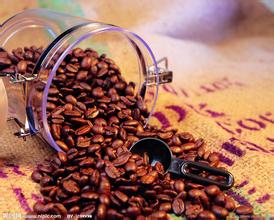Introduction to the Origin Culture of Indonesian Coffee beans Malaba Coffee in India
Strictly speaking, monsoon coffee can not be attributed to coffee varieties, but a unique processing method of raw coffee beans, is a new flavor created inadvertently. In the 17th and 18th centuries, India shipped coffee beans to Europe by sailboat, which took six months. The raw beans were placed on the bottom of the barn and absorbed the moisture and salty taste of the sea. The raw beans arrived in Europe long ago. The color changed from dark green to the yellowish brown of rice. The acidity of the coffee almost disappeared, but it unexpectedly developed a strong nutty and cereal flavor. It tasted full, with a bit of black rice tea flavor. Surprisingly, Nordic people like this kind of golden alternative coffee very much.
The time came to the nineteenth century, and in 1869, with the opening of the Suez Canal and the advent of steamships, the voyage from India to Europe was shortened. Then customers in Europe began to complain that the Indian coffee had changed, losing not only the rich nutty flavor, but also the charming golden yellow of the past, so they cancelled their orders one after another. Of course, Indian exporters knew the reason. The development of the shipping industry has cut the time for coffee beans to Europe by more than half, and the beans have already arrived at the port of destination before they are ripe and transformed. Naturally, it loses its original flavor. In order to restore the unique taste of monsoon coffee, exporters thought of making use of the monsoon blowing from the sea along the coast of Malaba in southwestern India from late May to September each year to produce a similar golden, sour coffee in the past. so it's called monsoon coffee.
Monsoon coffee needs to be made with sun beans. The factory where beans are stored faces to the west. The beans are laid flat in the field, and the windows are all open to catch the salty monsoon from the southwest. After reaching a certain extent, put it into the bag, but the coffee beans should not be too full, and the coffee bags should not be piled too dense so as not to be airtight and moldy, and it is time-consuming and labor-consuming to pour out coffee beans and replace sacks from time to time to avoid mold. This period of time is about 12 to 16 weeks, and after it is ripe, it will be fumigated to drive out the weevil, and finally to sift out the failed beans that have not turned golden. After at least six months to a year of monsoon blowing, the quality and quantity of beans have changed significantly. Coffee beans will swell to twice their size, reduce their weight and density, and have a moisture content of about 13%.
The appearance of the monsoon coffee is particularly beautiful, the golden color and the fat bean shape all look so different, think back to the process of its beauty, it is like an advanced SPA trip specially prepared for a rich lady: imagine, Miss beans lives in a big house built by the sea, lying there every day, facing the direction of the sea breeze, enjoying the beauty of the sun and beach, enjoying enough. Go back to the room to rest, bored, but also come out from time to time to bask in the sun, a string of doors, meet a friend! After living such a pleasant life for more than half a year, due to being too moist, the originally thin figure became plump and round, turning into a beautiful, fair-skinned and beautiful person. Wow!

Important Notice :
前街咖啡 FrontStreet Coffee has moved to new addredd:
FrontStreet Coffee Address: 315,Donghua East Road,GuangZhou
Tel:020 38364473
- Prev

Introduction to the origin of sixteen different kinds of coffee beans
Mantenin is located in the Manning region of Sumatra, Indonesia. Manning is famous for its fullness of particles and thick taste. It has been known to the world since the 18th century, and people call it the best coffee in the world. Manning's coffee beans are treated in a very interesting way, usually by putting the dried coffee peel and pulp into hot water and washing them off. What Manning tasted.
- Next

Introduction to the origin of coffee beans in Madagascar
There are more than 6000 species of coffee trees, most of which are tropical trees and shrubs. There are four main coffee trees in the world, of which only two are of real commercial value and are planted in large quantities, and the quality of the coffee beans produced by other coffee trees is also higher than that of other coffee trees. The first is Arabica beans, which account for 70% of the world's output, the world-famous Blue Mountain.
Related
- Does Rose Summer choose Blue, Green or Red? Detailed explanation of Rose Summer Coffee plots and Classification in Panamanian Jade Manor
- What is the difference between the origin, producing area, processing plant, cooperative and manor of coffee beans?
- How fine does the espresso powder fit? how to grind the espresso?
- Sca coffee roasting degree color card coffee roasting degree 8 roasting color values what do you mean?
- The practice of lattes: how to make lattes at home
- Introduction to Indonesian Fine Coffee beans-- Java Coffee producing area of Indonesian Arabica Coffee
- How much will the flavor of light and medium roasted rose summer be expressed? What baking level is rose summer suitable for?
- Introduction to the characteristics of washing, sun-drying or wet-planing coffee commonly used in Mantenin, Indonesia
- Price characteristics of Arabica Coffee Bean Starbucks introduction to Manning Coffee Bean Taste producing area Variety Manor
- What is the authentic Yega flavor? What are the flavor characteristics of the really excellent Yejasuffi coffee beans?

